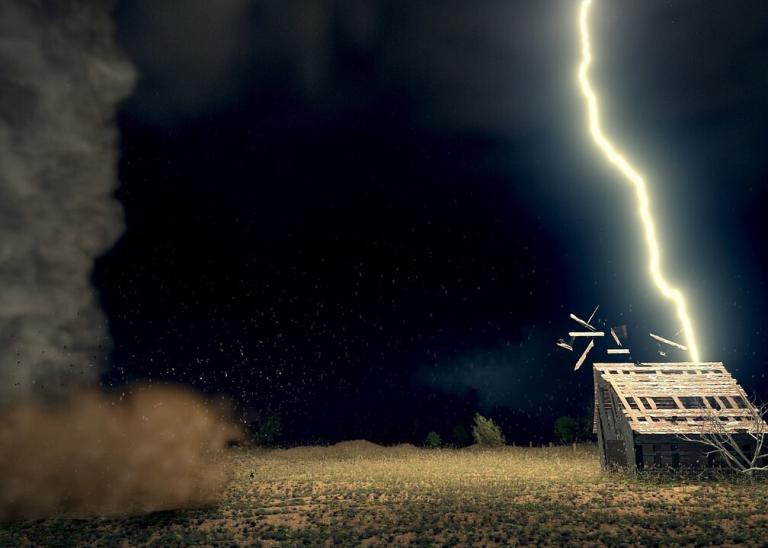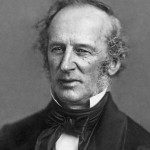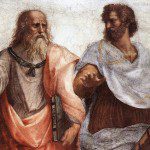
If lightning strikes a tree, how do we know that it is random; whereas, if lightning strikes an image of Christ, that is God’s judgment against idolatry? Perhaps TurretinFan, who is the latest to interpret the lightning, will say that even the tree was not struck randomly, and that its destruction was ordained by God before all eternity. The Amazing and Undaunted Mr. X is a Calvinist, and Calvinists do not blow their nose unless it had been decreed by the Godhead. But surely God is not blasting with righteous judgment every tree that gets struck. No, Mr X might say, but God does have a purpose in striking the tree, even though we may not be able to discern it. Nevertheless, TF believes he can discern the purpose of God when the image of Jesus is struck. This is selection to suit a pre-made theology: When something Mr. X does not like is struck by lightning, God is affirming him in his dislike. (Never mind all the images of Jesus that don’t get struck.) When something Mr. X is neutral about is struck, God just has His own purposes that are mysterious. If lightning should strike Mr. X, would it be because God had finally grown weary of his blog, too?
Mr. X is particularly struck (no pun intended) with the fact that this is the second time the large statue of Jesus in Rio de Janeiro has been blasted by lightning. God must really be trying to make a point. The first time, there was no damage to the statue. This time, its finger was struck off.
Now, as it happens, there is a photograph of this latest act of God. One hundred feet tall, sitting high atop the city at the peak of the Cordova mountains, with its arms outstretched that way, the statue looks to me to be an invitation to lightning. In fact, there is a lightning rod near by, but perhaps is not well-placed enough. Perhaps the prominent statue intercepts the lightning on its way to the rod. Who knows? Who cares? Lightning strikes objects all the time, but when it is a religious statue, suddenly Mr. X’s attention is diverted from Ergun Caner long enough for him to prognosticate about the meaning behind it all and wag his finger at graven images.
“The idol cannot protect itself from lightning!” Mr. X cries, as if anyone believed it can. And therein lies a key mistake that Calvinists make when condemning Catholics for their “idol worship.” The assumption is that we think the religious objects, as objects, have power. The assumption is that we attribute God’s power to the material thing. But we do not. We know just as well as Mr. X does that the statue cannot save us or answer our prayers. We know just as well as he that a crucifix is not a talisman. What it does do is help focus our attention on the God who is merely represented (not replaced) by the object. God does not have to prove He has more power than the statue by striking off its finger, because no one suspected that it had any power in the first place.
Nevertheless, Mr. X finds the whole incident similar to the one told of in 1 Samuel 5:1-5.
And the Philistines took the ark of God, and brought it from Ebenezer unto Ashdod When the Philistines took the ark of God, they brought it into the house of Dagon, and set it by Dagon. And when they of Ashdod arose early on the morrow, behold, Dagon was fallen upon his face to the earth before the ark of the Lord. And they took Dagon, and set him in his place again. And when they arose early on the morrow morning, behold, Dagon was fallen upon his face to the ground before the ark of the Lord; and the head of Dagon and both the palms of his hands were cut off upon the threshold; only the stump of Dagon was left to him. Therefore neither the priests of Dagon, nor any that come into Dagon’s house, tread on the threshold of Dagon in Ashdod unto this day.
Mr. X does not exactly say why this passage is relevant in this context. No lightning or cause of the destruction of Dagon is mentioned in this passage. Moreover, Dagon is not Yahweh but a different object of worship altogether. Finally, Dagon is toppled the first time and utterly destroyed the second. Whereas, in Rio, no damage occurred on the first strike of lightning, and Jesus only lost a finger the second time. If God sent the lightning, as Mr. X claims, as a judgment upon idolatry, why would He not have blasted the statue in Rio to bits? Why is lightning not blasting statues of Mary all over the Catholic landscape? If God wanted to make a point, why do so in a way that has all the characteristics of random happenstance?
No attempt is made to consider such questions; we are meant to accept Mr. X’s declaration that this is the judgment of God, based upon nothing other than Mr. X’s own ipse dixit.
That is not good enough. Unless Mr. X can explain how he is so sure this particular lightning strike has a theological meaning, whereas lightning strikes against trees are inscrutable; unless he can explain why 99.9% of all religious objects are left untouched by destruction, yet the ones that are destroyed show the wrath of God; then he is just an anonymous blogger in an an unidentified basement, indistinguishable from Pat Robertson, claiming theological vindication at random events.
***
If you like the content on this blog, your generous gift to the author helps to keep it active. I remember all my supporters in my Mass intentions each week.











